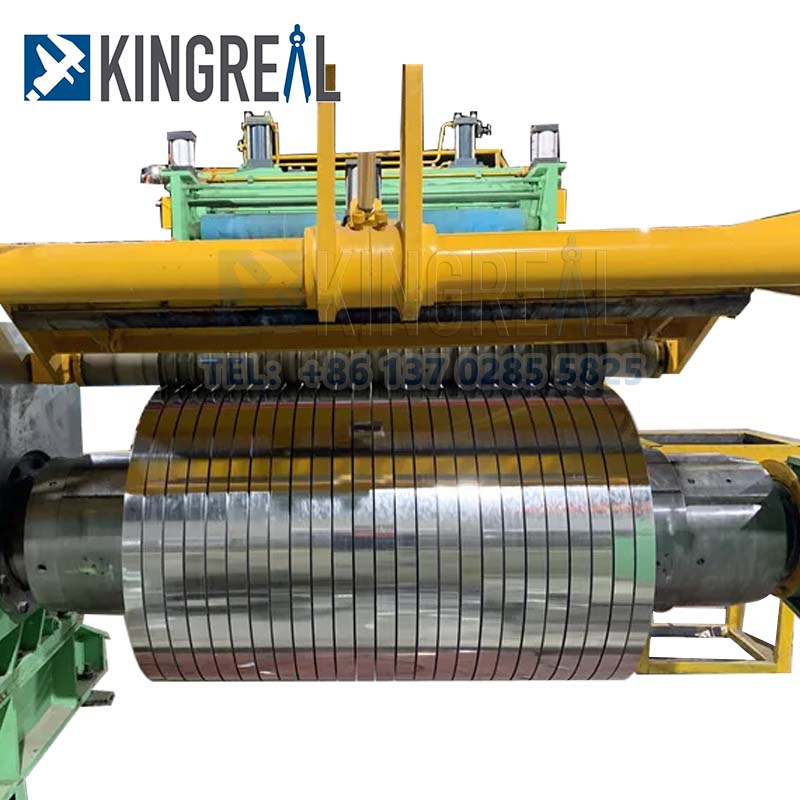1. During the operation of the metal slitting machine equipment, if the tool has a lateral swing problem, it will cause dimensional defects, such as the lateral swing of the tool and the outer diameter of the tool. Because the lateral swing value of the tool cannot be zero. The reason is the precision error of the tool thickness, inner diameter, spacer sleeve width, etc., and the warping caused by the lateral stress when the thick plate is sheared.
2. During the production of the steel slitting machine equipment, the steel plate has a problem of transverse warping, which causes poor width dimensions. This is because the product cut in the transverse warping state is measured to be larger than the setting value of the knife.
3. As the metal slitting line is produced and operated, there are certain matching errors in the spacer sleeve, knife, etc. When the number of pieces is large when the knife is matched, the cumulative error becomes larger. This is due to poor upper tolerance setting. You should know that the width of the product cut by the slitting machine is always slightly lower than the product side size of the knife. Therefore, it is necessary to predict the degree of this lower tolerance in advance. When the knife is matched on the product side, the size of the spacer sleeve is determined as a reference.
The shearing method used should also be considered. In comparison, if the coil slitting machine equipment adopts straight pull shearing, the tension of the steel coil will increase, the transverse warping will disappear, and the size will also go down.

In addition to the machine itself, the thickness and hardness of the metal material determine the resistance during the slitting process. Thicker or harder materials are more difficult to cut, which can easily cause width deviation after slitting. As the material thickness increases, the deformation and rebound of the material may also increase, affecting the cutting accuracy. At the same time, the feed speed and operation process during slitting also affect the cutting quality. Too fast speed may cause material deformation and affect the cutting width; too slow speed may lead to reduced production efficiency and defects on the material surface. Whether the operation process meets the specifications and whether the tool setting is reasonable are closely related to the width accuracy after cutting.
In addition to the machine itself, the thickness and hardness of the metal material determine the resistance during the slitting process. Thicker or harder materials are more difficult to cut, which can easily cause width deviation after slitting. As the material thickness increases, the deformation and rebound of the material may also increase, affecting the cutting accuracy. At the same time, the feed speed and operation process during slitting also affect the cutting quality. Too fast speed may cause material deformation and affect the cutting width; too slow speed may lead to reduced production efficiency and defects on the material surface. Whether the operation process meets the specifications and whether the tool setting is reasonable are closely related to the width accuracy after cutting.